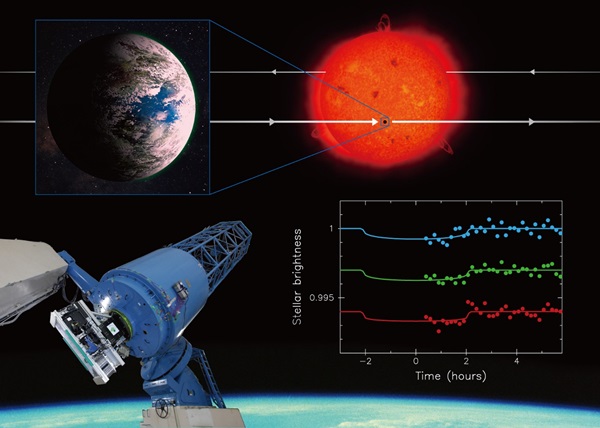Key Takeaways:
Researchers from the National Astronomical Observatory of Japan (NAOJ), the University of Tokyo, and the Astrobiology Center have nailed down an important property of a potentially Earth-like extrasolar planet while it was in transit.
The team used the MuSCAT instrument on the Okayama Astrophysical Observatory’s 188-cm telescope to study the extrasolar planet, called K2-3d, discovered by NASA’s Kepler spacecraft in 2015.
The extrasolar planet is about 150 light-years away, 1.5 times the size of Earth, and closely orbits its host star in about 45 days. K2-3d is particularly important to scientists because there’s a chance it may foster extraterrestrial life. Calculations show that the temperature of the host star and the closeness of the orbit make for a warm Earth-like climate with the possibility of liquid water on the surface.
During a transit, a planet passes in front of its parent star and blocks some of its light, decreasing the star’s brightness.
If scientists study this transit using a future telescope such as the Thirty Meter Telescope, they will be able to check K2-3d’s atmosphere for signs of important life-bringing molecules, like oxygen.
To study this, the researchers will need to calculate the exact orbital period of K2-3d so they can get a closer look during future transits, and while this process has been difficult in the past, this team has successfully calculated its orbit with a precision of about 18 seconds. This success is an important step in studying the extrasolar planet, which in turn will continue the search for extraterrestrial life.
In the future, the team will use next-generation telescopes to measure how much the brightness decreases during the transit and how it varies with wavelength, which in turn will give more information about the atmosphere of the extrasolar planet.
The team will continue researching K2-3d and will keep using MuSCAT for similar research in their ongoing search for extraterrestrial life.










